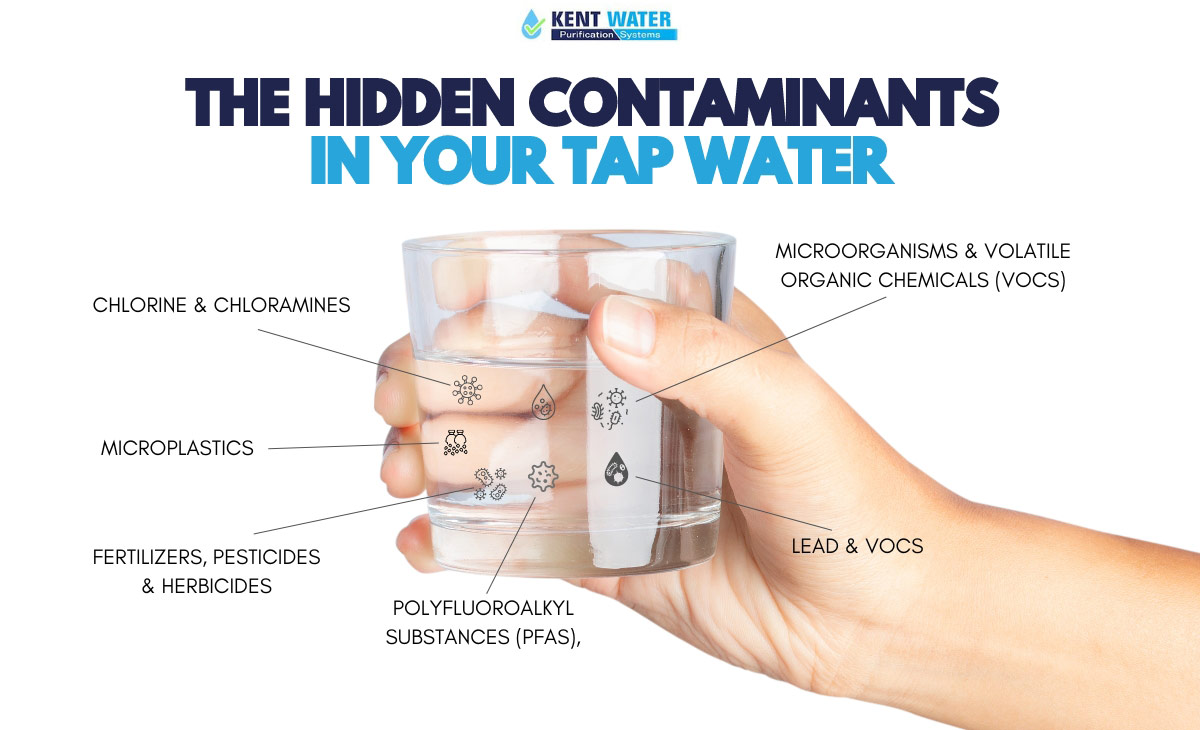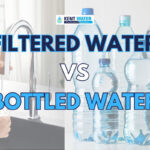Considering our health and well-being, water quality is as essential as water itself and is not negotiable when consuming tap water. Therefore, clean, accessible drinking water is a cornerstone of public health. However, from water sources to treatment plants, distribution networks, and, finally, our faucets, each sip of water holds a story of its journey, where contaminants can join and pose potential health risks. Which begs the question: is a water filter necessary? In this article, we will analyze the hidden pollutants in tap water and to what extent water filters can be beneficial.
Limits of Tap Water Safety
It is important to know how tap water is regulated and the overall situation of water supply to better understand what is at stake regarding tap water quality.
Drinking water is federally regulated through the Guidelines for Canadian Drinking Water Quality, which set stringent standards to ensure its safety. The provincial, territorial, and municipal governments enforce these guidelines. In Ontario, regulation is carried out under the Safe Drinking Water Act, overseen by the Ministry of the Environment, Conservation and Parks. The Act mandates the monitoring and treatment of 151 microbiological, chemical, and radiological parameters in tap water. Ultimately, cities like Toronto undergo thorough water treatments, checking for more than 300 contaminants.
However, even though public water is strictly regulated and monitored by authorities—often more rigorously than bottled water—these efforts have some limits and raise essential questions.
Firstly, there is the question of the levels of contaminants allowed in drinking water set by the guidelines. Experts have expressed concerns about certain substances’ concentration and potential long-term health effects. Also, institutions often struggle to keep up with regulating new and potentially harmful environmental chemicals. Consequently, regulating and enforcing water guidelines can only partially prevent water contamination.
Alongside the concerns about water regulation, aging infrastructure, and underinvestment present significant challenges. Outdated distribution pipes can facilitate water contamination, and many water systems still need to be modernized to meet current maintenance requirements. Furthermore, water treatment plants lack adequate technologies to effectively remove newer synthetic compounds.
Finally, the impact of climate change also poses risks to water safety. Extreme weather events like heavy rainfall and flooding can overwhelm drinking water infrastructure, potentially exposing people to untreated, bacteria-laden water. This is particularly concerning as the existing guidelines need to comprehensively address the potential impact of climate change on water utilities.
The Hidden Contaminants in Tap Water
Now that we have provided an overview of the public water system, let’s examine the hidden contaminants in tap water.
Chlorine and Chloramines
Chlorine is a commonly used disinfectant in tap water to eliminate harmful microorganisms and reduce the risk of waterborne diseases. To extend the effectiveness of chlorine, treatment plants add ammonia to form chloramines when in contact with water.
While excellent at removing harmful pathogens, these chemicals can cause irritation, breathing issues, and dry skin and hair at a minimum. More seriously, when interacting with natural organic matter, they can produce carcinogenic disinfection by-products such as bromate, trihalomethanes (THMs), and haloacetic acids (HAAs). Long-term exposure, even at low levels, can be associated with liver and kidney problems, anemia, reproductive effects, and an increased risk of certain cancers, including bladder cancer. Consuming them while pregnant may also increase the likelihood of some congenital disabilities.
Microorganisms
Waterborne pathogens, such as Cryptosporidium, Giardia, E. coli, and Legionella, can still spread through drinking water.
How? Some are resistant to disinfectants and chlorine, making them challenging to remove. In addition, circumstances such as insufficient treatment and human error can lead to severe contamination. Finally, they can enter distribution systems over the distance from water facilities to households, coming from accidental or illegal releases from sewage treatment centres and runoff from farms and urban areas.
The health effects of these pathogens can include Legionnaires’ disease and gastrointestinal or respiratory illnesses, among others, primarily and severely affecting vulnerable individuals.
Lead
Heavy metals such as arsenic, cadmium, and mercury are other common toxic contaminants in tap water. These metals enter the water system via industrial pollution, agricultural runoff, mining wastes, and power plants.
However, lead is the primary concern regarding heavy metals in tap water. It stems from the corrosion of outdated service lines and plumbing systems of houses and buildings built before the 1950s, which included lead pipes, faucets, and fixtures. As a result, hundreds of thousands of Canadians could consume tap water with lead levels exceeding safety limits. Moreover, lead was still used to solder pipes and fixtures until 1990. Subsequently, even homes built before 2014 might still contain fixtures with lead.
Lead persists in the body over time, causing severe and sometimes permanent health issues. This is especially concerning for children and infants, as even low levels of exposure can lead to cognitive deficits, behavioural problems, and developmental delays. Moreover, lead can harm fetal development by crossing the placental barrier. Immunocompromised individuals are also at a higher risk of infections. In adults, chronic exposure to lead can result in hypertension, cardiovascular disease, kidney damage, cognitive decline, and reproductive issues. Consequently, experts agree that there are no safe levels of lead exposure.
Fertilizers, Pesticides, and Herbicides
Fertilizers, pesticides, and herbicides from agricultural activities can enter drinking water via agricultural drainage, septic system or wastewater leakage, industrial process discharges, and stormwater runoff. Therefore, households supplied by well water near farms or industrial areas are likelier to have high levels of these contaminants. However, agricultural intensification has increased their concentration in lakes and groundwater sources, thus affecting municipal water supplies.
Nitrates, commonly used in fertilizers, can be particularly dangerous for infants. They can interfere with the oxygen-carrying capacity of the blood, leading to methemoglobinemia or “blue baby syndrome”. For adults, some research suggests a link to an increased risk of colorectal or gastric cancer.
Other contaminants resulting from agricultural activities include pesticides and herbicides such as alachlor and atrazine. Atrazine, in particular, is widely used in Quebec and South Ontario, which has resulted in its presence in Toronto and Montreal‘s public distribution systems at dangerous levels. This chemical has been linked to breast and prostate cancer, Parkinson’s disease, and congenital disabilities
More globally, these endocrine-disrupting chemicals are associated with a wide range of adverse health effects, including cardiovascular and kidney problems, reproductive difficulties, and hormone disruption, among others.
Microplastics
Microplastics, tiny plastic particles less than 5 millimeters in size, have become a growing concern for environmental and public health. These particles originate from the degradation of plastic items that pollute our soils, air, and water sources. Due to their small size, they can disperse widely in various environmental compartments, including tap water.
Firstly, as wastewater treatment plants can only partially remove microplastics from water, treated water released in natural bodies often still contains microplastics. What’s more, runoff from roads, agricultural fields, and urban areas can convey microplastics into our water reservoirs. Even microplastics suspended in the air can settle into water supplies. As a result, studies like Orb Media found microplastics in 94% of the tap water samples tested in North America.
While the health implications of microplastics in drinking water are not fully understood yet, research has shown that they can affect various systems in the human body. Indeed, microplastics can absorb and carry environmental toxins such as heavy metals and Bisphenol A, an endocrine disruptor linked to cancer.
PFAS, the “Forever Chemicals”
Per- and polyfluoroalkyl substances (PFAS), commonly called “forever chemicals,” are synthetic compounds widely used in consumer and industrial products since the 1950s. They have gained increased attention due to their widespread presence in the environment and potential health risks associated with exposure.
One easy pathway to PFAS exposure is through contaminated tap water. These chemicals can contaminate water sources through various means, such as industrial discharge, landfills, firefighting activities, and the breakdown of everyday products like non-stick cookware. Once in the water supply, PFAS can persist for long periods, posing a risk to human health even at low concentrations. Recent studies estimate that a significant percentage of tap water in the US and Canada may contain PFAS.
Research on the health effects of PFAS is ongoing, but evidence suggests potential links between PFAS exposure and health issues, including cancer, liver damage, immune system impacts, and reduced fertility.
Other Contaminants
Some less-known contaminants are worth highlighting among the never-ending list of contaminants in tap water.
Pharmaceuticals: It may surprise you to learn that the drugs and medications we consume, such as painkillers, antibiotics, antidepressants, and birth control pills, can end up in our tap water. It happens when our bodies excrete these drugs through urine and feces, which then pass through sewage treatment processes and enter rivers and lakes. Unfortunately, traditional water treatments like chlorine do not effectively remove them, allowing them to reach our drinking water.
There is a growing concern about the potential impact of these pharmaceuticals on human health. Existing studies suggest behavioural changes, endocrine disruption, and reproductive toxicities, but comprehensive research in this area is still needed.
Fluoride is sometimes added to tap water. Still, while some studies have revealed its potential neurotoxicity on children, others have found that it could lead to tooth enamel and skeletal fluorosis.
Volatile organic compounds (VOCs) are chemicals that vaporize into the air and dissolve in water. Used in industry, agriculture, transportation, and household products, they are pervasive daily and can quickly enter water sources. They are known to pose risks like liver and kidney damage, nervous system effects, and potential carcinogenicity.
What Water Filters Can Do
The number of contaminants can be vertiginous, and their effects on health pretty terrifying. But no need to panic: there are simple, in-home water filters for every problem you’re likely to encounter. If well maintained, they will ensure the consistent purity of your water.
That said, not all filters remove the same contaminants and have the same efficiency. Let’s take a quick look at different types of water filters and their effectiveness:
Chlorine/Chloramine Removal Filters: most filters contain carbon to capture contaminants and are used in pitchers, refrigerator dispensers, and whole-house or under-sink systems. These filters primarily eliminate chlorine and remove pesticides, herbicides, and VOCs, but not bacteria or nitrates.
Note: pitcher and fridge dispenser filters can only reduce chlorine for taste, not remove the carcinogenic by-products of chlorination. Additionally, they have small capacities, require frequent filter replacements and only a few remove heavy metals.
Reverse Osmosis Systems are the most comprehensive water filtration systems. They include one or more activated carbon filters and another membrane to catch smaller contaminants that carbon can’t. As a result, reverse osmosis systems
effectively neutralize pathogens, chemicals, heavy metals, and infinitesimally small particles such as microplastics. Additionally, they are the only type of filtration certified to remove nitrates, and they showed near complete removal of PFAS.
UV Filters use UV light to disinfect water by killing bacteria, viruses, and other pathogens. They help ensure microbial safety but do not remove chemical contaminants.
Do You Really Need a Water Filter?
In conclusion, a wide range of filtration technologies can address the variety of contaminants in our tap water. But are they indispensable?
Experts tend to say yes, and as we could have seen, what’s coming out of your tap can have severe health impacts, depending on the contaminants and their concentrations. But remember that long-term exposure to even low levels of pollutants can have significant consequences.
Deciding whether to use a water filter comes down to understanding the type of water in your area and your comfort level with what’s in it. However, filtration systems can provide a last line of defence against potentially harmful substances, protecting your health and your family’s.
The final choice is yours. Kent Water Purification Systems offers a wide range of water filtration solutions to meet your needs if you’re interested in improving your water quality. Feel free to visit our website, contact us, or book a free water test. Our professionals are always here to help!



